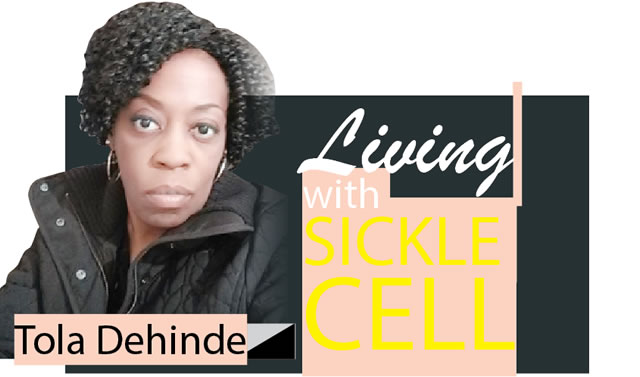
The clinical manifestation of sickle cell disease is diverse. Among them are leg ulcers, which are relatively common and can be painful and disabling. Leg ulcers tend to heal slowly over months to years. The pain is severe, excruciating, penetrating, sharp, nerve-wracking, and stinging in nature. While it is common for the ulcer to heal when therapy is initiated, the sad truth is they often reoccur. It is most common for people with the HbSS blood group and less often seen in HbSC and HbS Thalassemia.
Leg ulcers appear in areas with less subcutaneous fat, thin skin, and decreased blood flow. The commonest sites are the medial and lateral ankles, often encircling the whole area if not controlled early. The midpoint malleolus is more commonly involved than the lateral malleolus. Less common sites are the anterior tibial area, back of the foot, and Achilles tendon.
Old studies of nutritional deficiencies in sickle cell disease demonstrated that zinc deficiency is common in individuals living with sickle cell disease. The mineral is thought to play an important role in immune function and wound healing. Early, small but randomised studies show that administration of zinc sulphate resulted in the healing of leg ulcers. A chronic leg wound due to sickle cell complication often results from multiple causes, and usually takes longer to heal due to factors like inflammation and infection.
I, therefore, decided to do research online from different sites for the various vitamins required for anyone who is living with sickle cell and has a leg ulcer wound. A significant sign of good health is the ability to heal. While wound healing can quickly become complex, it can improve when focusing on nutrition, especially when concentrating on vitamins and minerals. These essential nutrients play a critical role in repairing tissue and speeding up recovery, which can have a profound effect on the healing process itself.
Vitamin A
Retinol is another name for vitamin A; it is an essential ingredient for wound healing that helps enhance your immune system and promotes the production of collagen, a protein crucial for the skin’s elasticity and strength.
Additionally, Vitamin A promotes the growth of epithelial cells, a class of cells that line the interior surfaces of many internal organs’ cavities and external surfaces of organs and blood vessels. This process is essential during the proliferation stage of wound healing.
Food sources of vitamin A are fish oils, milk, eggs, maize, palm oil, and liver as prime examples of animal-based sources. Fruits are mango, papaya, watermelon, guava, tangerine, nectarine, peach, passion fruit, and dried apricots.
Vegetables are carrots, tomatoes, sweet potatoes, and dark leafy greens like kale and spinach, which are ideal plant-based sources because they contain beta-carotene, which the body converts into vitamin A.
Vitamin B Complex
With eight different vitamins (B1, 2, 3, 5, 6, 7, 9, and 12), vitamin B complex has many advantages for healing wounds. They support the growth of new cells and help strengthen the body’s immune system.
For instance, vitamins B1 and B2 aid in the cellular production of energy, whereas B3 is necessary for the repair of DNA and the synthesis of steroid hormones.
Vitamin B5 assists in the breakdown of carbs and fats, for energy and encourages the production of red blood cells. Vitamin B6 can create new healthy cells. Along with vitamin B12, vitamin B6 (folic acid) helps make red blood cells and contributes to the production of DNA, supporting cellular growth and function. Finally, vitamin B12 is crucial for red blood cell development and nerve function.
Food sources of B vitamins are whole grains, beans, lentils, milk, eggs, meat, fish, nuts, liver, some fortified breakfast cereal, apples, bananas, and avocados.
Vitamin C
Ascorbic acid is also known as vitamin C and is important for synthesising collagen, a protein that helps develop new skin over the wound structure. It also strengthens the body’s immune system and functions as a powerful antioxidant that shields cells from oxidative stress.
Citrus fruits like oranges, plums, lemons, blackcurrants, grapefruits, strawberries, kiwis, bell peppers, spinach, lychees, potatoes, kale, and broccoli are some examples of foods that contain vitamin C.
Vitamin D
This nutrient is a major player in the inflammatory stage of wound healing. By boosting the immune system and controlling the body’s inflammatory response, it aids in preventing infection. It also helps the skin produce antimicrobial pesticides to shield wounds from infection.
When exposed to natural sunlight, our skin produces vitamin D. Foods like dairy products, egg yolks, red meat, liver, and fatty fish, such as salmon, sardines, and mackerel are excellent sources of vitamin D.
Vitamin E
Vitamin E is a fat-soluble vitamin that assists in preventing and forming scars and defends against oxidative damage, which can delay the healing process.
In terms of food, numerous nuts, peanut butter, bell pepper, seeds, green leafy vegetables like spinach, kale, broccoli, and fortified cereals are rich sources of vitamin E.
Vitamin K
This vitamin is a primary contributor to the blood clotting stage. Vitamin K starts a chain of chemical processes that enable proteins to unite and form a clot, which stops the bleeding.
Green leafy vegetables like spinach, cabbage, broccoli, lettuce, kale, and fruits like blueberries and figs all contain vitamin K. Additionally, it is present in cheeses, beef liver, pork chops, chicken, prunes, green beans, avocados, egg yolk, red kidney beans, cashew nuts, and meats.
If you would like to get in touch with me about sickle cell, do so via email: [email protected]. Check out my blog: https://www.dailylivingwithsicklecell.com/. My book on sickle cell – ‘How to Live With Sickle Cell’ and my other books are available for purchase at www.amazon.com.




